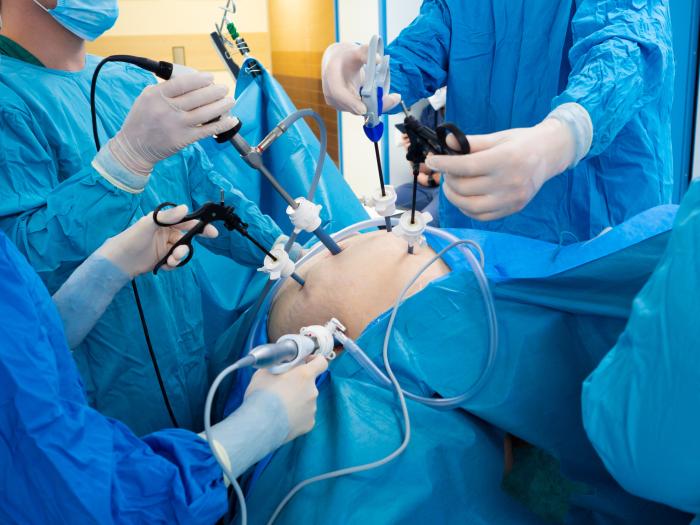Laparoscopic Surgery

Laparoscopic surgery, also known as minimally invasive surgery or keyhole surgery, is a modern surgical technique in which operations are performed far from their location through small incisions (usually 0.5–1.5 cm) elsewhere in the body. This approach has several advantages over traditional open surgery, particularly in reducing recovery time, minimizing pain, and decreasing the risks of complications.
How It Works
-
Access: The procedure starts with the surgeon making a few small incisions in the patient's abdomen. Through one of these incisions, a laparoscope—a thin tube with a high-intensity light and a high-resolution camera at the front—is inserted. The camera sends images to a monitor, allowing the surgeon to see inside the patient's body in real-time.
-
Insufflation: The abdomen is inflated with carbon dioxide gas to create more space to operate. This elevates the abdominal wall above the internal organs, giving the surgeon a clearer view and more room to work.
-
Performing the Surgery: Special instruments are inserted through the other incisions to carry out the surgery. These instruments can cut, sew, and remove tissue as needed. Because the surgeon is operating while looking at the monitor, a high degree of precision and coordination is required.
-
Closure: Once the procedure is completed, the instruments are removed, the gas is allowed to escape, and the incisions are closed with sutures or staples. These wounds typically heal with minimal scarring.
Applications
Laparoscopic surgery can be used for a wide range of procedures, including, but not limited to:
- Gallbladder removal (cholecystectomy)
- Repair of hernias
- Removal of the appendix (appendectomy)
- Gynecologic surgeries, such as hysterectomy
- Weight loss surgeries
- Certain types of cancer surgeries
Advantages
- Reduced postoperative pain
- Shorter hospital stays
- Faster recovery and return to normal activities
- Smaller scars
- Reduced risk of infection
Considerations and Risks
While laparoscopic surgery has many benefits, it's not without risks. Complications can include infections, bleeding, and risks associated with anesthesia. In some cases, the surgeon may need to switch to an open surgical method if complications arise during the procedure.
Conclusion
Laparoscopic surgery represents a significant advancement in surgical techniques, offering benefits to both surgeons and patients. It requires specialized training and expertise but has become a standard approach for many procedures. If you're facing surgery, discussing all available options, including laparoscopic surgery, with your healthcare provider can help you make an informed decision.
